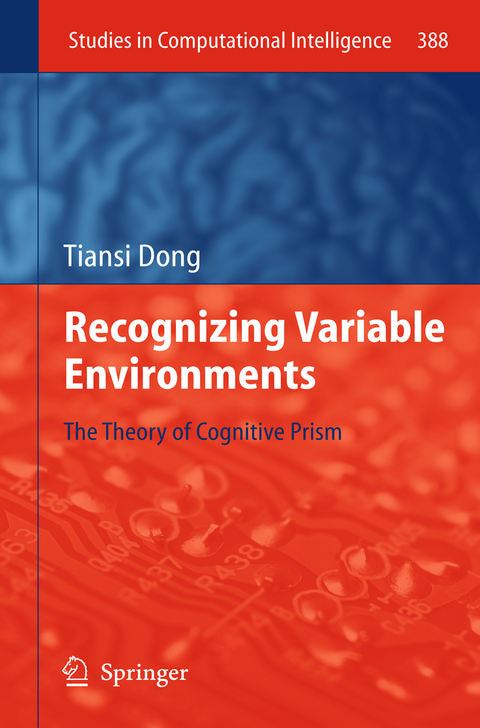
Recognizing Variable Environments
The Theory of Cognitive Prism
Seiten
2013
|
2012
Springer Berlin (Verlag)
978-3-642-27121-2 (ISBN)
Springer Berlin (Verlag)
978-3-642-27121-2 (ISBN)
Recognizing Variable Environments explores artificial intelligent systems' capacity to identify their surroundings. Readers will find a collection of interdisciplinary evidence from a computational perspective -- namely, the theory of cognitive prism.
Normal adults do not have any difficulty in recognizing their homes. But can artificial systems do in the same way as humans? This book collects interdisciplinary evidences and presents an answer from the perspective of computing, namely, the theory of cognitive prism. To recognize an environment, an intelligent system only needs to classify objects, structures them based on the connection relation (not through measuring!), subjectively orders the objects, and compares with the target environment, whose knowledge is similarly structured. The intelligent system works, therefore, like a prism: when a beam of light (a scene) reaches (is perceived) to an optical prism (by an intelligent system), some light (objects) is reflected (are neglected), those passed through (the recognized objects) are distorted (are ordered differently). So comes the term 'cognitive prism'! Two fundamental propositions used in the theory can be informally stated as follow: an orientation relation is a kind of distance comparison relation -- you being in front of me means you being nearer to my face than to my other sides; a pair of objects being connected means any object, precisely the space occupied by the object, can be moved to a place where it connects with the pair.
Normal adults do not have any difficulty in recognizing their homes. But can artificial systems do in the same way as humans? This book collects interdisciplinary evidences and presents an answer from the perspective of computing, namely, the theory of cognitive prism. To recognize an environment, an intelligent system only needs to classify objects, structures them based on the connection relation (not through measuring!), subjectively orders the objects, and compares with the target environment, whose knowledge is similarly structured. The intelligent system works, therefore, like a prism: when a beam of light (a scene) reaches (is perceived) to an optical prism (by an intelligent system), some light (objects) is reflected (are neglected), those passed through (the recognized objects) are distorted (are ordered differently). So comes the term 'cognitive prism'! Two fundamental propositions used in the theory can be informally stated as follow: an orientation relation is a kind of distance comparison relation -- you being in front of me means you being nearer to my face than to my other sides; a pair of objects being connected means any object, precisely the space occupied by the object, can be moved to a place where it connects with the pair.
An introduction.- The state of the art.- Research topics and research questions.- Recognizing spatial environments: A commonsense approach.- The formalism: A region-based representation and reasoning ofspatial environments.- A List representation of recognizing Indoor Vista spatial Environments: The LIVE model.- Conclusions, evaluations, discussions, and future work.
| Erscheint lt. Verlag | 30.11.2013 |
|---|---|
| Reihe/Serie | Studies in Computational Intelligence |
| Zusatzinfo | XX, 124 p. |
| Verlagsort | Berlin |
| Sprache | englisch |
| Maße | 155 x 235 mm |
| Gewicht | 229 g |
| Themenwelt | Geisteswissenschaften ► Philosophie ► Logik |
| Informatik ► Theorie / Studium ► Künstliche Intelligenz / Robotik | |
| Technik | |
| Schlagworte | Cognitive prism • cognitive system • Computation Intelligence • Connectedness relation • Distance • orientation • Spatial enviroments |
| ISBN-10 | 3-642-27121-9 / 3642271219 |
| ISBN-13 | 978-3-642-27121-2 / 9783642271212 |
| Zustand | Neuware |
| Haben Sie eine Frage zum Produkt? |
Mehr entdecken
aus dem Bereich
aus dem Bereich
Buch | Softcover (2024)
REDLINE (Verlag)
20,00 €
Eine kurze Geschichte der Informationsnetzwerke von der Steinzeit bis …
Buch | Hardcover (2024)
Penguin (Verlag)
28,00 €


